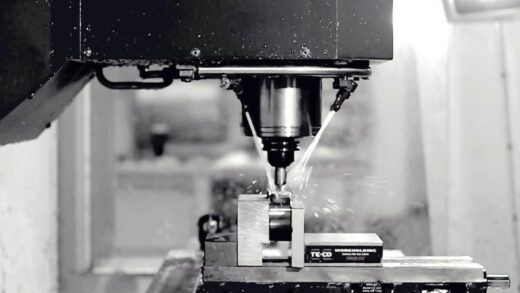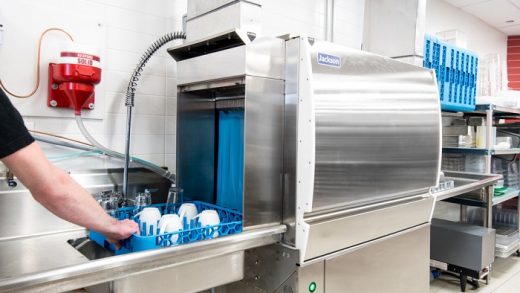Safety and Cleanliness: The Benefits of Class H Industrial Vacuum Cleaners
Industrial environments are often filled with dust, debris, and hazardous substances that can pose a risk to both workers and equipment. These materials may be fine dust particles, toxic chemicals, asbestos, or even biological contaminants. To ensure the working environment is safe and clean, businesses use specialised vacuum cleaners. Class H industrial vacuum cleaners stand out for their exceptional filtration capabilities and ability to handle hazardous materials.
Contents
What Is a Class H Vacuum Cleaner?

The H Class vacuum cleaners are the highest-rated industrial vacuum cleaners in terms of filtration efficiency. They are designed to capture and contain extremely fine particles, including hazardous and carcinogenic dust. The “H” in Class H stands for “High Risk,” indicating their suitability for handling dangerous substances. These vacuum cleaners are certified to capture at least 99.995% of particles down to 0.3 microns in size. This level of filtration is crucial for maintaining a safe working environment in industries dealing with asbestos, lead, silica dust, and other harmful particulates.
More Info on Class H Vacuum Cleaners
Wet and Dry Vacuums
A wet and dry H class vacuum is a versatile machine capable of handling both liquid spills and dry particulates. This machine is equipped with specialised filters and collection systems to prevent the escape of hazardous materials, regardless of their state.
HEPA Vacuums
High-Efficiency Particulate Air (HEPA) vacuums are a subset of Class H vacuums. They use HEPA filters, which are capable of trapping 99.97% of particles as small as 0.3 microns. These vacuums are particularly useful in environments where allergens and ultra-fine particles are a concern.
Hazardous Dust Vacuums
For industries dealing with hazardous materials, M-Class and H- Class vacuums are available. These vacuums are built with the strongest filtration and are designed for a wide range of applications. They can improve the air quality and protect the operator. Some models are battery-operated and therefore easily manoeuvrable.
Pneumatic Vacuums
Pneumatic Class H vacuums operate using compressed air instead of electricity. They are ideal for use in areas where electrical equipment poses a safety risk, such as in the presence of flammable gases or liquids.
Benefits Across Industries
Enhanced Safety
The primary benefit of H Class vacuums is the high level of safety they provide. By effectively capturing and containing hazardous particles, they significantly reduce the risk of respiratory illnesses and other health issues associated with exposure to dangerous substances.
Compliance with Regulations
Using these industrial vacuums helps businesses comply with strict health and safety regulations, particularly in industries dealing with asbestos removal, lead abatement, and other hazardous materials.
Improved Air Quality
The superior filtration of Class H vacuums contributes to better overall air quality in the workplace. This can lead to improved employee health, reduced sick days, and increased productivity.
Versatility
Many of these vacuums are designed to handle a wide range of materials, from fine dust to larger debris and even liquids. This versatility makes them valuable tools in various industrial settings, from building and construction to industries dealing with metal, wood, plastic, pharmaceuticals, textile and paper.
Cost-Effectiveness
While the initial investment in this type of vacuums may be higher than standard industrial vacuums, their durability and efficiency can lead to long-term cost savings. They reduce the need for multiple cleaning tools and minimise the risk of costly health-related incidents.
Proper Use and Maintenance

To ensure the effectiveness and longevity of Class H industrial vacuum cleaners, proper use and maintenance are essential. This includes:
- Regular filter changes and cleaning.
- Proper disposal of collected hazardous materials.
- Training employees on correct usage techniques.
- Conducting routine inspections and maintenance checks.
- Using appropriate personal protective equipment (PPE) when operating the vacuum.
Australian Work Health and Safety Regulations
In Australia, the use of H Class vacuum is governed by the Work Health and Safety (WHS) Regulations. These regulations specify the requirements for managing risks associated with hazardous materials.
- Asbestos Removal: The Australian government mandates the use of Class H vacuums for asbestos removal work. This ensures that asbestos fibres are effectively contained and disposed of safely.
- Standards Compliance: Class H vacuums used in Australia must comply with AS/NZS 60335.2.69, which outlines the safety requirements for wet and dry vacuum cleaners, including those used for commercial purposes.
- Environmental Protection Regulations: Various state and territory environmental protection agencies have regulations governing hazardous waste disposal. These vacuums play a crucial role in the safe collection and containment of such waste, helping businesses comply with these regulations.
- Training and Certification: Operators of industrial vacuums in Australia are required to undergo specific training and certification to ensure proper use and maintenance of the equipment.
Key Takeaways
Class H industrial vacuum cleaners are indispensable tools in maintaining safety and cleanliness in high-risk industrial environments. Their superior filtration capabilities, coupled with their versatility and compliance with stringent regulations, make them a valuable investment for businesses dealing with hazardous materials. As workplace safety standards continue to evolve, the importance of these specialised vacuum cleaners in industries is likely to grow, ensuring healthier and more productive work environments for everyone.

















